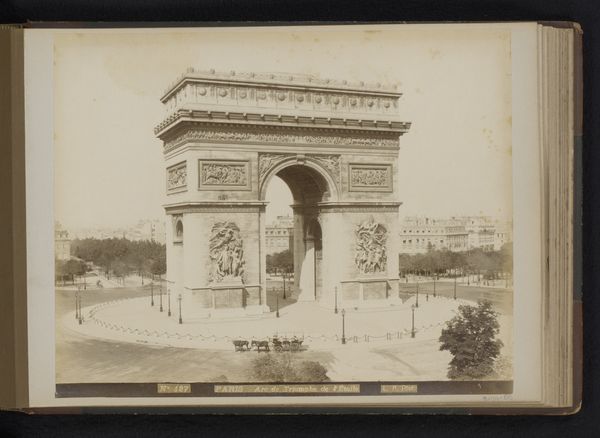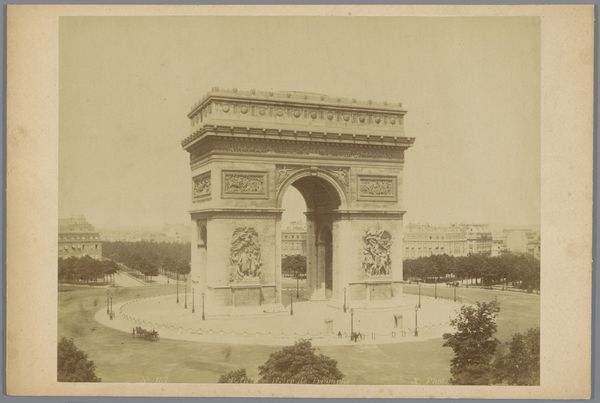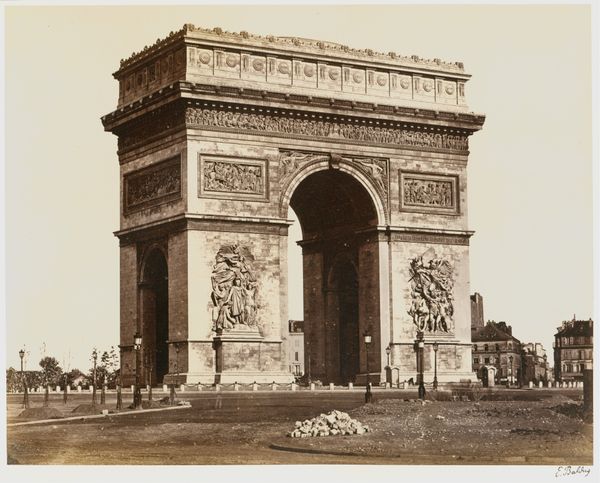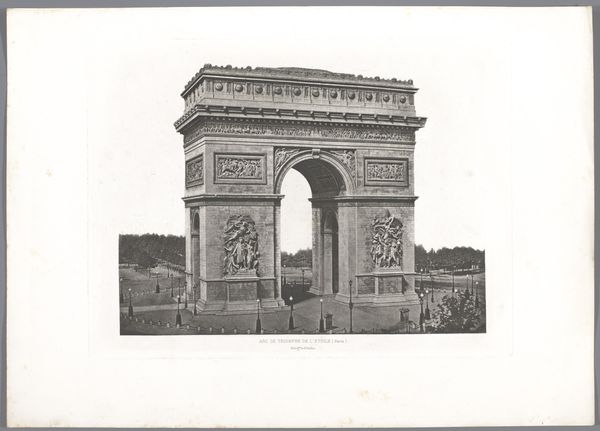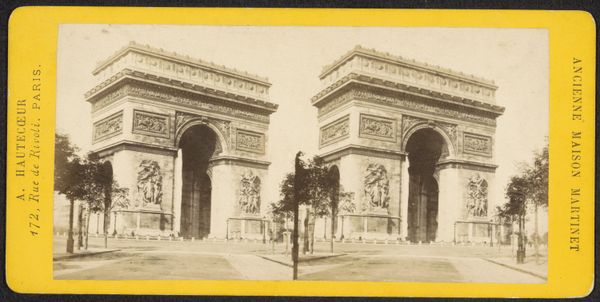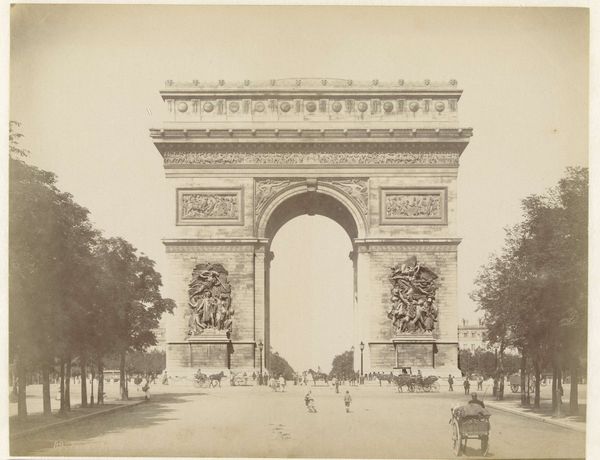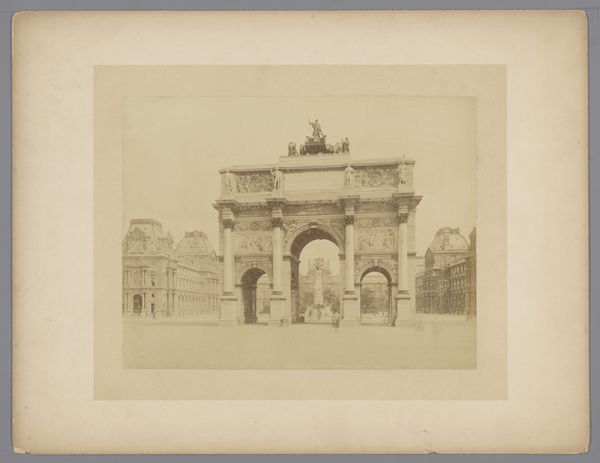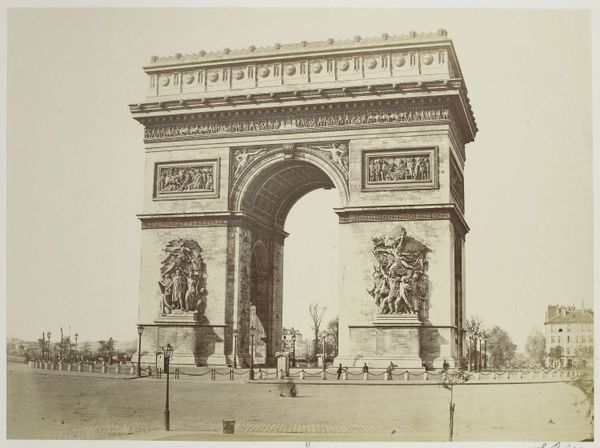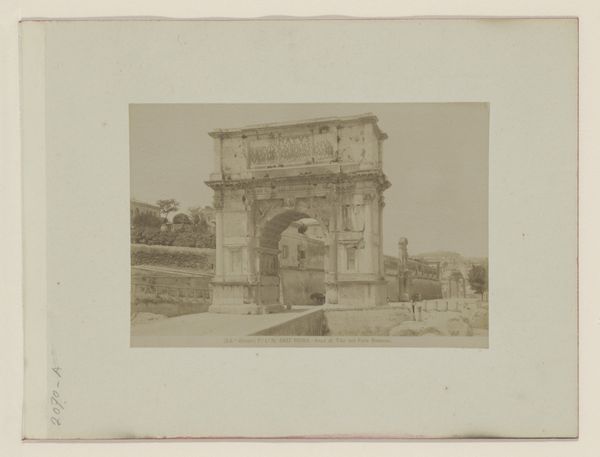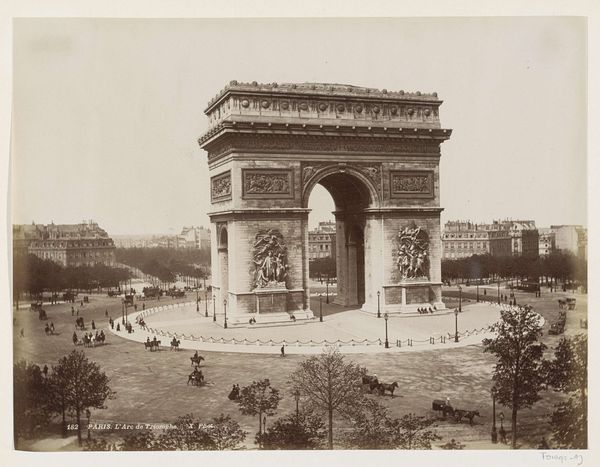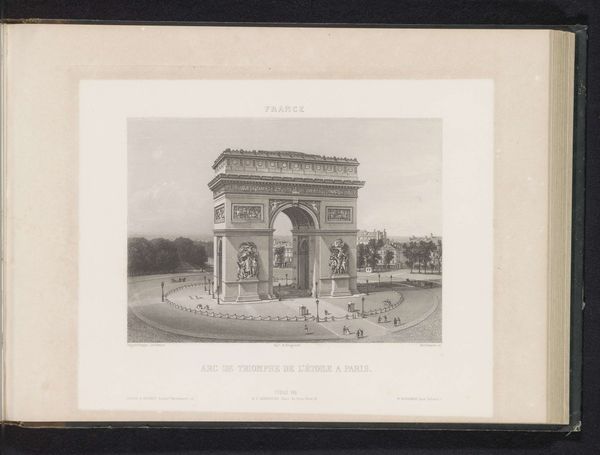
print, photography
#
neoclassicism
# print
#
photography
#
cityscape
Dimensions: height 220 mm, width 275 mm, height 343 mm, width 446 mm
Copyright: Rijks Museum: Open Domain
Curator: This photograph, titled "Arc de Triomphe, Parijs," is attributed to J. Kühn, a publisher, and likely dates between 1885 and 1910. The work presents a view of the iconic Parisian landmark. What strikes you initially about this print? Editor: Its almost monochromatic palette immediately suggests a certain solemnity. The monumental arch is solid, geometrical, and almost imposing, yet the soft tones create a strange atmospheric effect. There is a play with light and shadow that softens what would otherwise be a rather stark neoclassical structure. Curator: It’s fascinating how this monument of Napoleonic triumph translates in this photographic rendition. Built to honor those who fought in the Napoleonic Wars, the Arc has always been a site of public ceremony and national identity. Its visual prominence in cityscapes reinforces the political narrative. The photograph appears to capture the Arc during a time of rapid transformation in Paris. Editor: Indeed. If we look closely at the composition, we see that the photographer carefully frames the Arc, placing it as the central subject while still allowing glimpses of the surrounding city. The geometrical structure of the arch and the city blocks contrast to give dynamism and a layered perspective to the urban space. The light plays on the intricate carvings. Curator: It is precisely this tension between architectural monumentality and the dynamism of modern Parisian life that interests me. Early photography played a crucial role in democratizing images of power. Before photography, how could most people have glimpsed this Arc other than being there? It solidified both an understanding of place and of French imperial authority. Editor: Yes, and in focusing so intensely on the play of tone and geometric forms, we also find ourselves compelled by the sheer depth of field and precision within its subdued tones. It asks us to observe more closely and thoughtfully. It is a successful example of marrying technique and artistic sensibility. Curator: Looking at this photograph reminds me how powerfully images shape our collective memory, documenting both triumphs and tragedies, telling stories that evolve through the years. It is important for us to understand the different ways of image creation in society to reflect on how meanings change over time. Editor: Agreed. And understanding form can really clarify our reaction to history and its many complex reverberations. The visual language invites engagement; seeing allows us to understand and know, which then enables us to think about who and what has been.
Comments
No comments
Be the first to comment and join the conversation on the ultimate creative platform.
